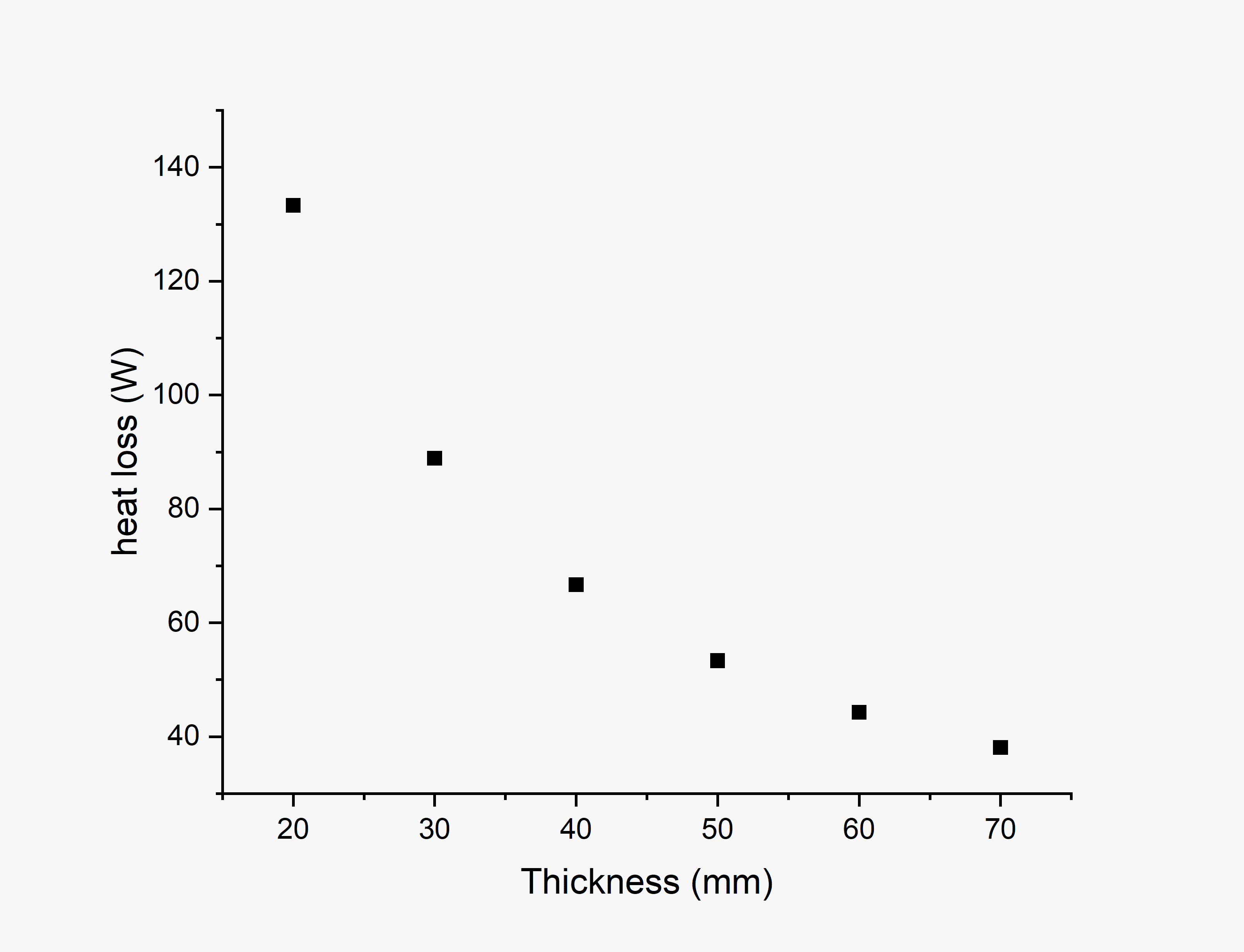How is the build chamber in your 3D-printer heated? Is there any thermal insulation and if how thick is it?
My two cents:
** thermal insulation**

That’s the math for a small 300x300mm printer heated to 70°C (for 130°C tripple this number).
With a 6030 aluminium extrusion a 60mm insulation would fit within the walls and bring down the heatloss to approx. 45W. In other words: Once it is heated up the thermal losses are small enough for it to hold the temperature on its own. Reducing the overall power consumption.
heating/temperature control
For cooling and heating: oil<-> air heat exchanger/radiator might be a good solution:
- place one inside the printer
- the other on the outside
- insert a heater in the loop (only when heating is required, for cooling keep it off)
- possible to push past the 100°C liquid temperature.
Add a fan that circulates the air within the chamber to equalize the temperature.
This way the chamber can be heated and cooled without venting any air into the room.
You are looking for perfect here where you probably should be looking for “good enough”. You will never build a chamber insulated well enough to hold temperature for hours or even perhaps a 24hours+ without cooling. Plus, you are never going to build a perfect vacuum chamber to prevent fresh air leakage or venting air the hot air into the room and that will also add to the cooling effect. If you have ANY opening or seam, there will be leakage.
Now consider just how big and bulky such an enclosure would need to be with the materials that a commonly available to you that you can afford. Is it really worth it for the small gain in finished product? Even manufacturers of high end printers accept the they will only get ‘good enough’ and that they need to have the heater cycle on and off to keep a steady temperature.
Air leakage isn’t an issue. Based on the enclosures I already have they do a pretty damm good job of keeping the nasty ABS fumes inside.
Just quick math but I should be able to do it. Given that a lot of enclosures can reach 40-50°C without active heating and insulation I guess 70°C passive is realistic when you do 6cm of XPS. I probably will go with an overshoot and cool down the air for the temperature control approach.
Big & bulky isn’t an issue as the stock printer is already big and bulky with lots of space for insulation (originally used for the 4 filament spools but they live in a dry box so it is free real estate): The printer already has 60mm extrusion I can fill up with so no additional bulk is added. The bottom plate will be 2cm to keep as much print volume as possible in the z-direction. Maybe I can squeeze also 5cm there with some 3D-scanning and milling pockets.
Even manufacturers of high end printers accept the they will only get ‘good enough’ and that they need to have the heater cycle on and off to keep a steady temperature.
Some heating or cooling is required to keep it stable. Don’t matter if you need heating or cooling just something for regulation.
The enclosure for the other printer is slightly more complicated as I am aiming for a 150°C chamber temperature (135°C is required) there which means stainless steel or aluminum inner lining and rockwool insulation that can’t be milled to shape like XPS.
Is it really worth it for the small gain in finished product?
Half the fun is pushing limits and seeing what works and what doesn’t.
What is probably the most critical are stable temperatures.
Rapid changes can wreak havoc on ABS for example.


